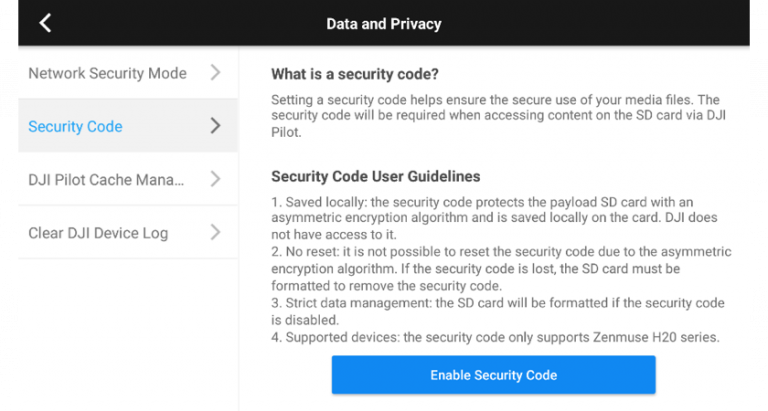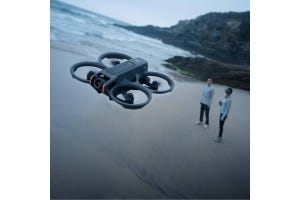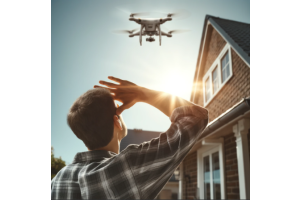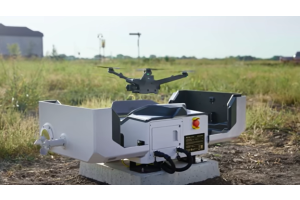
With DJI’s latest firmware update for the M300, they have introduced a host of new features which are sure to make a positive impact on your operations. With updates that cover privacy and data settings, up to enhanced flight and image capturing – the V3 firmware is an update you wouldn’t want to miss.
Offline Updates
Firmware V3 makes updating to the latest firmware now even easier with offline updates!
Firmware packages can now be downloaded and stored on your computer or external storage device like a thumb drive or SD card, allowing you to update the firmware anytime you want – regardless if you have an internet connection!
Apart from the convenience of not needing an internet connection, this also means that users with particular security concerns can now review and install firmware updates offline.
It’s easy to get started – First, tap ‘HMS’ in DJI Pilot, then select Firmware from the left-hand menu. ‘Offline Update’ will appear at the top right corner. Tap it, and then choose the appropriate firmware for your M300, smart controller, and payload. Then tap ‘Update All,’ and you’re on your way!
Improved Security Controls
The V3 software upgrade adds various enhanced data and privacy settings, including Restricted Network Mode, SD card encryption, the ability to erase all data on the device, and more.
V3 includes three distinct network security settings:
Standard Mode:
There are no limits to connecting to the network.
Restricted Network Mode:
The only network services linked are maps, RTK, live broadcasts, and other applications that need access to the internet.
Local Data Mode:
The Local Data Mode is akin to a software-only version of “airplane mode,” for the M300. Recently, global advisory firm FTI Consulting verified that “when DJI’s Local Data Mode is enabled, no data that was generated by the application was sent externally to infrastructure operated by any third party, including DJI.” DJI has provided additional information on Local Data Mode here.
The Network Security mode options are available in DJI Pilot under the Data and Privacy settings.

The firmware update extends additional security measures to the microSD cards, which now offer optional AES encryption, requiring a security code to access. Users will then need to enter this code each time they start the M300.
The Security Code option is also available under the Data and Privacy settings.


As part of the enhanced security measures, users who utilize the Security Code will first need to download the DJI Decrypt Tool to make their data available on a Windows PC.
Using DJI Decrypt

When you insert an encrypted SD card into a Windows PC, the DJI Decrypt Tool will be required to unlock the data. To access the files on the card, open the tool, choose the card you want to use, and enter the password. During this procedure, the computer will not require an internet connection; as a result, users with high-security needs can be confident that their data is safe at all times.
Clear All Device Data

Using the “Clear DJI Device Log” option, you can delete your drone’s internal logs, remote controller logs, and H20 Series payload records after updating to the V3 firmware version. If you’ve uploaded your flight logs to DJI’s servers, DJI will remove them for you at any time upon request.
Capture Panoramas With A Single Click Using H20/H20T

You can now capture entire scene panoramas with your H20N or H20T with the tap of a button. A panoramic image can be created in less than a minute, allowing for a quick overview of the scene. Emergency responders will significantly benefit from this feature as panoramic images help provide additional vantage points of the operating area.

Coordinated Turn
Pilots can use this new feature to make smooth turns during flight when it is enabled. They can achieve this by adding Roll to Yaw automatically when the aircraft makes a turn. Before Coordinated Turn, an experienced drone pilot had to balance both control sticks to ensure that the drone’s heading was aligned with the front, which can be challenging for newer pilots or in difficult situations.
Height Limit Increase
New to the V3 firmware is a maximum height limit of 1500m, increased 3x from the previous limit of 500m. However, when used within 50km of an airport, the M300‘s height is still restricted. If you require authorization to fly near an airport, refer to DJI’s in-depth guide for requesting an unlock certificate.

Health Management System
One of the most critical aspects of keeping your drone in proper working order is having access to actionable data about the craft’s health.
Users can access error displays, error records, maintenance instructions and management logs via the Health Management System (HMS).
If you want to get a precise overview of your DJI M300 RTK‘s health (and you should), then all of this is crucial information.
The HMS provides you with up-to-date data to evaluate the craft’s stability.

This new firmware adds quick access to both the DJI Maintenance and DJI Care Enterprise programs from within the DJI Pilot App.
As an additional benefit of FW V3, you will now be able to view and record error logs for batteries and the battery station when you connect the battery station to the remote controller via USB-C.
Return-to-Home
The Return-to-Home function has been newly optimized. Now, when users encounter obstacles during RTH, the DJI Pilot will signal a reminder for users to exit Auto-RTH and control the aircraft manually to land it.
It is also possible to turn off Auto-RTH during flight by moving the remote controller control sticks to the opposite direction.
Additional Pinpoint Optimizations
The PinPoint functionality on the M300 is one of the most useful and powerful features. H20 Series payloads include a laser rangefinder that operators can use to determine the distance of objects from the drone and its XYZ coordinates, all with a simple tap on the controller screen.

The new V3 firmware update allows users to edit, manage, and set a home point for multiple PinPoints. This feature gives you much greater flexibility when choosing the home point. You will now be able to set home points based on either the aircraft’s takeoff location, the aircraft’s real-time location, the pilot and remote controller’s position, or any custom PinPoint locations that you specify.
For More Information
As you can tell, there’s a lot of new capabilities that firmware version V3 brings to the M300. The features listed here are only some of the updates that DJI has made.
To learn even more about what this new update offers, check out DSLRPros’ latest episode of Release Notes, where we dig a bit deeper into what these new features mean.To learn absolutely everything there is to know about the new firmware, check out the official DJI documentation here.
If you have any questions about this new firmware or the M300 in general, drop us a line or give us a call; one of our friendly drone experts will be more than happy to help you out!





